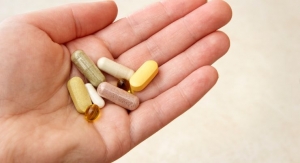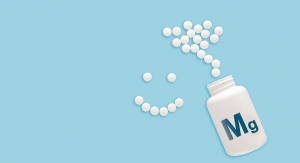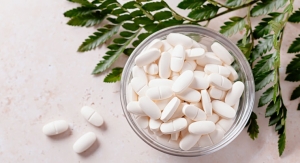Americans have never been this proactive about health. Sales of specialty supplements, fortified/functional foods, natural personal care products and cosmeceuticals are soaring as a result of their new "do-it-yourself" approach, creating an unprecedented $42 billion retail opportunity. They are also buying a wider range of products than ever. Last year, 79% of primary food shoppers used vitamins/minerals to help maintain health, while 79% used OTC drugs, 73% fortified foods, 72% Rx medications, 52% foods without artificial additives/preservatives, 39% herbal remedies, 37% organic foods, 24% aromatherapy, 19% homeopathic remedies and 14% in-home diagnostic kits (FMI/Prevention, 2001, Washington, D.C.).
The majority of Americans say they are actively involved in not only treating, but also diagnosing their own health-related problems. More than nine in 10 are confident about these decisions; 58% very confident. Six in 10 consumers say they are more likely to treat themselves than last year, 73% prefer to treat themselves and 62% plan on doing so more in the future. For the first time, the number of consumers who took an OTC drug (77%) for minor illnesses outnumbered those who decided to "wait to see" (69%) and 50 million consumers used a dietary supplement to treat a condition in the last six months (Roper Starch Worldwide/Consumer Healthcare Products Assn., 2001, New York, NY).
Food has also become a more integral tool in self care. Last year, 72% of shoppers tried to reduce the risk of, and 63% tried to manage or treat on their own, a specific health condition or illness via food purchases. And for the first time, just about half said that coping with food intolerances and slowing down the aging process also affected their grocery purchases (FMI/Prevention, 2000). Just over half of shoppers now believe that foods can replace some drugs (HealthFocus, 2001; Atlanta, GA).
Two major attitudinal trends will continue to impact the nutraceutical arena. The first is a diminishing confidence that our diet satisfies all of our nutritional needs: in 1994, 70% of women believed their diet met their nutritional needs, down to 46% in 2000. Concurrently, those who believe they need added nutrients has increased, from 54% in 1994 to 70% in 2000 (Multi-Sponsor Surveys, 2001; Princeton, NJ). Secondly, the practice of positive eating continues to grow: 86% buy foods because they contain desirable nutritional ingredients, 80% because they don't contain undesirable ingredients and 76% choose those fortified with specific nutritional substances (HealthFocus, 2001). As such, it is critical that functional food marketers limit ingredients perceived as unhealthy, no matter what the end benefit.
With more than half of Americans reporting their health status as excellent/very good and 30% as good, it's not surprising that health-directed actions are shifting from mania to moderation and everyday, on-going health maintenance remains a primary product motivator. In September 2001, consumers were most concerned (very and somewhat) with healthy eyesight, followed by heart disease, cancer, high blood pressure and high cholesterol. Since 1998, the biggest changes in consumers' health concerns have been a decreased concern for energy/fatigue, mental alertness, triglycerides and depression/emotional distress and an increased concern about headaches, skin problems/psoriasis, menstrual discomfort, stomach ulcers/digestion and heart disease (Figure 1). While major nutraceutical markets continue to mature, new growth opportunities will most likely emanate from the following up-and-coming new markets, mega market subsegments and novel niches.
| Figure 1 |
 |
OTC "Look � A � Likes"
From antacid gums to sleep inducing gummy bears, the market for foods and supplements that offer OTC drug-like benefits is quickly emerging. One quarter (26%) of adults has already used dietary supplements to treat a health problem; menopause topped the list (Figure 2). Three quarters using supplements for treatment were very or somewhat satisfied with the results. Users were most satisfied with supplements' performance against the common cold, flu or sore throat (80%); allergy/sinus (72%) and muscle, joint and back pain (70%). While relatively few products are available yet, supplements have also been used to treat immune problems (16%), insomnia (6%), high blood pressure (5%) and circulatory problems/vein health, high cholesterol and eye problems (4% each). And the opportunity for alternative treatment options looks strong. Two thirds of Americans are only somewhat or not at all satisfied with existing non-prescription options for teeth/gum problems, muscle/joint pain, minor eye problems, menopausal symptoms, allergy/sinus, skin problems and PMS (Roper/CHPA, 2001).
Americans' new penchant for self care is perhaps best reflected in the growth of the specialty supplement category, where condition-specific products are expected to stay strong. For the year ending 8/19/01, Information Resources, Inc. (IRI) reports dollar sales of specialty non-herbal supplements were +10% in the mass market and +9.5% in unit sales. Flaxseed (+52.8%), valerian (+43.3%), total antioxidants (+30.7%), fish oil/fatty acids (+18.4), glucosamine/chondroitin (+17.5%) and Acidophilus (+14.4%)-all having strong treatment connotations-were the top gainers. In contrast, herbal dollar sales dropped 18.6%.
| Figure 2 |
 |
High Blood Pressure Prevention
Concern over heart disease is increasing and with good reason. Gallup projects that heart disease (CVD), high blood pressure (HBP), high cholesterol and overweight will be among the health problems with above average growth for the decade ahead (Figure 3). CVD (+19%), high cholesterol (+18%) and HBP (+16%) rank one, two and three on the list of projected increases in women's health issues 2000-2010 (Princeton, NJ). With women's awareness increasing that CVD claims more lives than breast cancer, gender directed products are a good bet. A greater proportion of women than men are very concerned about CVD (49% vs. 34%); HBP (45% vs. 37%) and cholesterol (36% vs. 33%) (Omega Protein, Houston, TX). And there's likely to be more physician support too; 85% of physicians believe that vitamins are very or somewhat effective in preventing CVD (Roche Vitamins Inc., 2001).
High blood pressure represents the latest growth area in the maturing heart segment. The American Heart Association reports that 50 million adults have HBP, 60.8 million have some form of heart disease and 100.8 million have cholesterol above 200 mg/dL. Roper reports that slightly more than half of Americans (52%) would like to treat conditions like HBP and high cholesterol with non-prescription medications if available and labeled properly. Wirthlin Worldwide adds that 77% would be likely to take a supplement for reducing the risk of heart disease (McLean, VA). Roper confirms that HBP ranks fourth among the reasons people changed their diet in the past six months, just after weight, heartburn/indigestion and high cholesterol. From whey-containing products to lower sodium foods, HBP solutions will be in great demand. The Natural Marketing Institute reports that 29% of all U.S. households had a member trying in the last year to manage or treat their salt intake, 28% managing or treating hypertension, 40% cholesterol levels, 34% fat intake and 16% heart disease (Harleysville, PA).
| Figure 3 |
 |
The Silent Epidemic: Oral Health
Teeth and gum problems have hit the "Top 10" list of America's most common health ailments. The first-ever Surgeon General's report on oral health confirms that dental caries in children ages 6-8 and root/crown caries in adults age 55+ are accelerating. Most young adults have some degree of gingivitis, more than half aged 35-44 suffer from periodontal disease and half aged 55+ have severe periodontal diseases. As 78 million "Boomers" turn 50, the situation will worsen and the "do-it-yourself" dental market will explode. While all dental care segment sales are up, IRI reports in-home dental tools up 49% and floss up 5% in the last year. Oral care sales hit $5.2 billion and Packaged Facts projects they will reach $6.7 billion by 2005 (New York, NY). Whiteners, products for sensitive teeth, oral pain relief and oral care gum have all experienced strong double digit growth (Figure 4).
| Figure 4 |
 |
Interest will continue to climb. Chronic oral infections have been linked to increased risk of diabetes, heart/lung disease, stroke, pneumonia and low birth weight/premature infants. Diabetes, osteoporosis and arthritis put Americans at greater oral health risk and more than 400 commonly used medications can accelerate dental issues. Unprecedented consumption of non-fluoridated bottled water and increased snacking are also compromising oral health. Evidence that nutrition plays a key role in periodontal disease prevention will give scientific support to functional gums/candy. Multi-Sponsor Surveys reports that just about half of consumers say dental gums are better for their teeth/mouth than other gums. Only 16% felt very strongly that prices for many dental care items were too high.
Weighing In: A New "Non-Dieter" Dieter
With 139 million American adults overweight or obese, and two-thirds of women wanting to lose more than 20 pounds, the demand for cutting-edge weight control products is at an all-time high (Figure 5). According to The Natural Marketing Institute, 45% of U.S. households had a member trying to lose weight for appearance; 39% for health reasons and one in four shoppers increased their use of weight control products last year. Multi-Sponsor Surveys projects a 12% increase in weight problems for women by 2010, 33% for those age 50+ and 13.8% for the population overall.
| Figure 5 |
 |
According to The NPD Group (Rosemont, IL), the number of women who say they are "dieting"-although still high-has dropped from 34.7% in 1990 to 29% in 2000. However, they found that it is not that there are fewer dieters; rather they are not putting the label "dieter" on themselves. NPD has identified three very distinct weight market subsegments. Healthy Dieters (13%) are those on a diet that have a healthy dieting plan; Radical Dieters (16%) are on a diet, but have a relatively unhealthy dieting plan. Most exciting is a new Balanced Women grouping, the 20% who do not say they are on a diet, but have a unique healthier style of eating. While the basic components of these segments' diets are similar, their specific food choices and mindset are very different, giving marketers a new large and motivated market segment to pursue. NPD concluded that almost half of all women are actively monitoring their diet for health purposes and weight concerns are a part of it.
With the growing concern over weight, it is not surprising that almost three quarters of food shoppers confess their purchases are "at least a little influenced" by weight. And New Product News (Chicago, IL) counts new lower calorie and weight oriented foods up 115% last year. Parallel to the Japanese market, interest in super satiating foods-utilizing slow digesting carbohydrates to maintain blood sugar levels over time-is increasing and they will help prevent hunger pangs/cravings, suppress appetite and curb energy slumps. Weight loss has gone global. Last year, the World Health Organization announced that more people worldwide were now overweight than underweight.
| Figure 6 |
 |
Kids' Health
With Boomers having done an excellent job of passing on their health concerns and alternative health practices to their children, it's not surprising that the kid's health market is set to explode. Nearly three quarters of mothers of pre-teen children believe that vitamins can enhance physical performance, cognitive ability (70%), promote healthy skin (62%), improve mental state/relieve depression (60%) and reduce hyperactivity and increase attention span (52%) (Roche, 2000). Almost nine in 10 mothers are making a strong, or at least some, effort to buy more vitamin fortified foods. Just about half of pre-teen children, and 37% of teens, are regular vitamin supplement users (Roche, 2000).
SPINS (San Francisco, CA) reports seeing strong growth in the children's supplement market. Figure 6 does not include traditional mass market non-natural branded multivitamins. Sales of mass market children's multivitamins are actually down 3% (IRI, 2001). According to Paddy Spence, CEO of SPINS, "One trend these figures reflect is a move towards alternative medicine for children. There is a small but growing segment of parents who are turning to other supplement solutions for their children."
With nearly a quarter of the 63 million children between the ages of 4-18 now clinically overweight or obese-doubling within the last decade-it is clear that children's weight loss will be a vital up-and�coming segment. Sloan Trends & Solutions' TrendSense model predicts that the children's weight products market will move into mass market status in about one year (Figure 7). Just under one third (29%) of mothers of kids 6-17 (17% for moms of ages 6-8; 33% for moms of ages 9-17) say one of the things they have discussed with their child is their child's weight (Nickelodeon/Yankelovich Youth Monitor, 2001). Unfortunately, unhealthy generations will create a new nutraceutical "Youth Market" and fill the pipeline for products for decades to come. The American Heart Association confirms that 27 million kids under age 19 have high blood pressure; two million+ have high cholesterol (170 mg/dL). Type II diabetes now accounts for 50% of diabetes in kids; 36% get no daily exercise and 85% eat less than the "Five-A-Day" recommendation for fruits and vegetables.
| Figure 7 |
 |
Inner Beauty
While the cosmeceutical market-which generally involves topical applications-is projected to grow from $3.0 billion to $4.7 billion by 2020, so will the demand for supplements and functional foods that help to ensure beauty from the "inside out" (Freedonia Group, Cleveland, OH). One third of women believe that taking vitamin supplements-14% mineral supplements, 13% herbs-can be very effective-and 47% somewhat effective-in promoting healthy looking hair, skin and nails (Roche, 2000). Fifteen percent of women have already taken supplements to improve skin, 10% to improve nails and 9% to improve hair/scalp.
Two thirds of consumers want to learn more about nutrition and health as they apply to healthy skin and 43% say stated vitamin content levels on hair care, skin care or color cosmetics are very important (Roche, 2001). And a big opportunity it is. More than half of U.S. households (55%) made some sort of skin care purchase in the mass market last year, 76 million women experienced dry skin and 64 million self treated their dry skin problem (ORC International Women's Survey, 2000). Women aged 45-64 years-core supplement users-are the prime users of skin care products.
Markets To Watch And Work On . . .
Omega 3, DHA and Related Fish Oils. With a limited health claim approved for omega 3 fatty acids (DHA and EPA) and heart disease and recent FDA support of DHA supplementation of infant formula, it is not surprising that awareness of fish oil products continues to climb. Most importantly, the percentage of consumers believing these products are good for your health has grown significantly since 1998, up 12% for fish oil and 14 points for omega 3's. And the future looks good: 40% of those who are not familiar with omega 3's said they would be very or somewhat likely to use an omega 3 supplement and 50%, an omega 3 fortified food, after learning of omega 3's health connections.
Attention Deficit Hyperactivity Disorder(ADHD/ADD). With 39% of shoppers very concerned about their "lack of mental focus," it is not surprising that behavioral and learning issues are gaining more prominence in the children's market as well. Although true attention deficit disorders affect only 3-5% of children and 2-4% of adults according to the National Institute of Mental Health, widespread use of stimulants, the identification of nutritional substances that may aid with symptoms/control and the key role diet, food allergens and even antibiotics may play in exacerbating the conditions are spurring a fast paced alternative ADD segment.
Dietary Fiber/Whole Grains. Dietary fiber appears to have quietly shaken its "ho-hum" status, moving back into the spotlight with a new list of health benefits and unexpectedly strong sales. According to HealthFocus, one third of U.S. food shoppers increased their use of fiber in the past two years, while 39% increased their use of whole grains. Formal RDI's for dietary fiber and carbohydrates are expected this fall and a flurry of emerging health linkages-including a link to the trendy "Syndrome X" phenomenon-will draw further mass market and media attention.
Diabetes, Syndrome X and Sugar Free Products. With 800,000 new cases each year it is not surprising that diabetes ranks high among the list of conditions expected to accelerate in the next decade. Type II diabetes has increased 33% since 1991. Recent media attention to "Syndrome X," characterized by abdominal obesity, high triglycerides, low HDL's, hypertension and insulin resistance, will also draw more media and medical attention. While not simply as a result of diabetes, 31% of all U.S. households are watching their sugar intake (Natural Marketing Institute, 2001).
About the author:
Dr. A. Elizabeth Sloan is the president of Sloan Trends & Solutions, inc., Escondido, CA, a consulting firm whose expertise is leading-edge food, pharmaceutical and dietary supplement trend-tracking and predictions, strategic counsel and business-building ideas. Dr. Sloan can be reached at Sloan Trends & Solutions, Inc., P.O. Box 461149, Escondido, CA 92046; 760-741-9611; E-mail: sloantrend@attglobal.net.



























